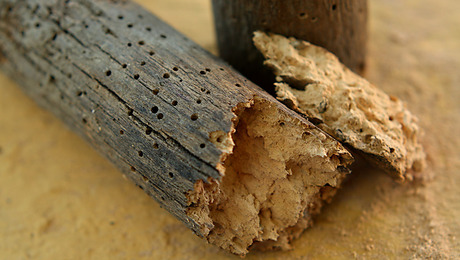I need to put a new outlet on a wall that is shared with the garage. The best place to get power is an existing outlet on the garage ceiling. I was planning on running romex in conduit for a short distance across the garage ceiling until it reaches the wall and then passing the romex down the wall. What is the best way to transition from the romex in conduit to just the romex? Should I use a box or just stub the conduit in the wall and put on of those little plastic caps on the end?
Thanks.


















Replies
You probably will not be able to go straight into the wall because there will usually be a top plate. You can bend a 1 1/2" offset in the pipe or put in a 90 sweep and an LB into the wall.
It is going to look better and go easier if you use a plastic surface raceway system. You just mount the base part and snap the cover around the wire
FWIW, I don't believe you're allowed to run Romex in a conduit at all.
I'd say(unless you're opening the ceiling) you're probably mounting a box at the wall either way to avoid looking ghetto. I'd either run Romex tacked cleanly on the ceiling and stress reliefs at the in and out into the wall, or if code req's conduit...pull wire in a conduit on the ceiling, and a stress relief/romex into the wall.
EDIT: live gfretwell's channel idea, but need to establish code req for conduit or not.
Edited 1/14/2009 12:27 am by deadman1
I was under the impression that wire outside of a wall has to be in conduit. At least in Minnesota. I'll pull separate wires to a box and run romex from the box to the new outlet, but I still dont get how the romex will leave the box and go into the wall. Through the back?
Thanks.
I'm picturing the box flat on the ceiling, against the wall. The conduit enters on one side, romex exits on the other side directly into the wall.
>>
I'm picturing the box flat on the ceiling, against the wall. The conduit enters on one side, romex exits on the other side directly into the wall.
Won't work. A standard 4x4 box flat on the ceiling will put the knockouts opposite the incoming conduit in the the same plane as the top plate. The box needs to be flat on the wall to get the back knockouts lower than the top plates and the knockout need to have a bushing in it to protect the wire. Conduit across the ceiling, then an LL or LR down with a short nipple , then the J-box would work.
CAP's method sounds neater and better though.
Edited 1/14/2009 6:19 am ET by DaveRicheson
Won't work. A standard 4x4 box flat on the ceiling will put the knockouts opposite the incoming conduit in the the same plane as the top plate. The box needs to be flat on the wall to get the back knockouts lower than the top plates and the knockout need to have a bushing in it to protect the wire. Conduit across the ceiling, then an LL or LR down with a short nipple , then the J-box would work.
Yeah, it might be totally blocked by the top plate...might not too. I figured he'd be smart enough to check for obstructions before he started running conduit, mounting the box, etc. If so, he might be able to stack a pass-through box on it and exit that -clearing the plate. But if that's the case, your idea-box on wall- is definitely cleaner.
CAP's method sounds neater and better though.
No argument there. I figured that was obvious, and there had to be a reason the OP was avoiding it...built-ins in the garage, etc.
I need to stop figuring so much. :)
Your right. There is a reason I'm not running the wire in the ceiling. There's an attic space right above where I'm working, but for some reason the homeowner doesn't want me to go up there. Also, I probably should have mentioned that the existing box in the garage is surface mounted so there's already conduit running in and out of it. I did the job earlier this evening, but thanks to all for the input.
Steve
"There's an attic space right above where I'm working, but for some reason the homeowner doesn't want me to go up there."That's where he's hiding the body. Obviously!
Grow room/
My thoughts exactly. Or a meth lab.
That's where they keep crazy Aunt Tilly. :)BruceT
It's your call ... but when a customer starts placing unexplained, arbitrary restrictions on the job ... it's time to consider declining the work.
I ran into this just the other day .... the guy made a seemingly simple request. I asked him point blank - what was REALLY the story? I then told him "no." I'll not be party to any sort of game playing.
Surface raceway systems are "protection" so they can be used to protect Romex if it is required. The PVC type is very easy to work with and would look pretty good. Certainly as good as EMT and a cludge of condolets and boxes.
The 2008 NEC allows NM in conduit. You just got to meet the conduit fill requirement. That means really big conduit.
To the OP: I suggest opening some of the sheetrock and running the wiring in the ceiling and wall. This can be done from the garage side, so patching the rock and matching paint (if any) is less critical.
But I suggest, if at all possible, that you extend a circuit from the same room, inside the house. Just makes things easier--to troubleshoot any problem in the future, to make sure all the power is off (even if you re-label the breaker, which you should).
Cliff
You don't generally need to use the conduit in areas where the romex is inside and not subject to damage. If you use the conduit, put a conduit fitting and plastic nut on the end to protect the cable from being cut by the end of the conduit.
Romex in conduit is legal where the conduit is used to protect the romex from damaage.
how are getting the power out of the existing box ?
.
.
. . . . . . . .
I concur with finding a way to run the wire inside the walls.
However, if you do attempt the other route, wire mold has products designed to transition from exposed to inside the wall. When I did it, we ran romex in the basement, then into an 'L' that connected to the wire mold track, where we stripped the sheathing off the romex.
You would have to change out the box in the garage ceiling to one that extends below the face of the drywall and has wire mold attachment points.